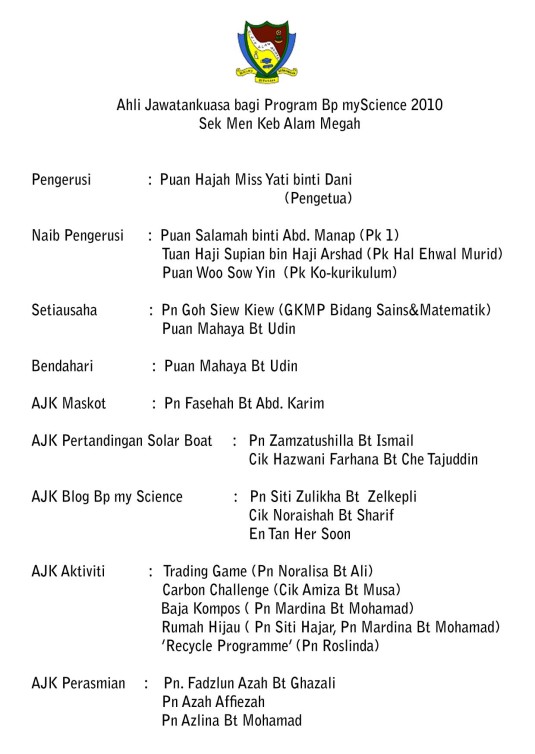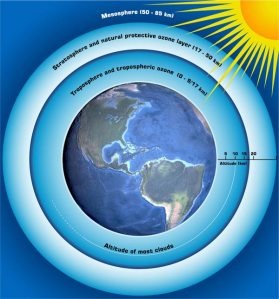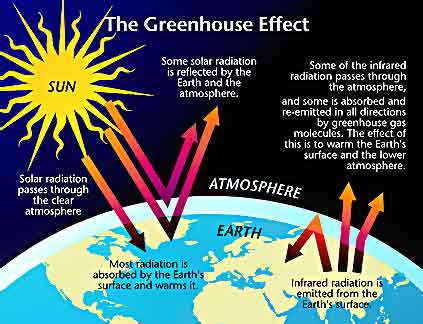Apa Kata Mereka …. ?
23 Jul 2010 Leave a comment
in Uncategorized
Temuramah & Kata -kata semangat daripada warga SMK Alam Megah =)
ABOUT OUR MASCOT
23 Jul 2010 Leave a comment
in Our Mascot
Our mascot is a Sunflower. We chose Sunflower as our mascotbecause of many reasons. Firstly, we would like to say something about sunflowers. Sunflowers are known scientifically as Helianthus annuus. There is a reason why they are also called the sun-loving flowers. Sunflower is a classic example of the involuntary response of plant to the sun. It turns its head directly to face the sun and reorients overnight to wait for the rising of the sunrise.
 The reason why we chose sunflower as our mascot because sunflower is a plant which has attractive features andowns the colour of the Sun. Besides that, plants kave great “aesthetic value which means they add to the beauty of the places that we live.
The reason why we chose sunflower as our mascot because sunflower is a plant which has attractive features andowns the colour of the Sun. Besides that, plants kave great “aesthetic value which means they add to the beauty of the places that we live.
Plants also undergo photosynthesis to release oxygen for all living things to stay alive. Furthermore, plants help us to balance the ecosystem by absorbing carbon dioxide and releasing oxygen. Lastly, Sunflower is very useful. It can be made as cooking oil, bio-fuel and snack food.
~Preparing the “Recycle” Banner ~
23 Jul 2010 Leave a comment
Date : 9 July 2010
Venue : SMK Alam Megah’s Graphic Lab
Activity : Students & Teachers designed a banner using the back part of an old
and unused banner. The new designed banner is placed at the front gate of the school.
Acid Rain : Ouch !
21 Jul 2010 Leave a comment
in Extra Facts
Acid rain? What is that?
Acid rain is a rain or any other form of precipitation that is unusually acidic, i.e. elevated levels of hydrogen ions (low pH). It can have harmful effects on plants, aquatic animals, and infrastructure through the process of wet deposition. Acid rain is caused by emissions of compounds of ammonium, carbon, nitrogen, and sulfur which react with the water molecules in the atmosphere to produce acids. Acid rain is a product of air pollution.
What is the cause of acid rain?
Acid rain is caused by a chemical reaction that begins when compounds like sulfur dioxide and nitrogen oxides are released into the air. These substances can rise very high into the atmosphere, where they mix and react with water, oxygen, and other chemicals to form more acidic pollutants, known as acid rain. Sulfur dioxide and nitrogen oxides dissolve very easily in water and can be carried very far by the wind. As a result, the two compounds can travel long distances where they become part of the rain, sleet, snow, and fog that we experience on certain days.
Human activities are the main cause of acid rain. Over the past few decades, humans have released so many different chemicals into the air that they have changed the mix of gases in the atmosphere. Power plants release the majority of sulfur dioxide and much of the nitrogen oxides when they burn fossil fuels, such as coal, to produce electricity. In addition, the exhaust from cars, trucks, and buses releases nitrogen oxides and sulfur dioxide into the air. These pollutants cause acid rain.
* Stop air pollution, Stop acid rain !
Ozone Layer Depletion
21 Jul 2010 Leave a comment
in Extra Facts
what is ozone layer?
The ozone layer is a deep layer in the stratosphere, encircling the Earth, that has large amounts of ozone in it. Ozone is the layer of gas that forms a protective covering in the Earth’s upper atmosphere. Ozone is formed when oxygen molecules absorb ultraviolet photons and undergo a chemical reaction known as photo dissociation or photolysis, where a single molecule of oxygen breaks down to two oxygen atoms. The free oxygen atom (O), then combines with an oxygen molecule (O2) and forms a molecule of ozone (O3). The ozone molecules, in turn absorb ultraviolet rays between 310 to 200 nm wavelength and thereby prevent these harmful radiations from entering the Earth’s atmosphere. In the process, ozone molecules split up into a molecule of oxygen and an oxygen atom. The oxygen atom (O) again combines with the oxygen molecule (O2) to regenerate an ozone (O3) molecule. Thus, the total amount of ozone is maintained by this continuous process of destruction and regeneration.
The ozone layer protects the Earth from the ultraviolet rays sent down by the sun. If the ozone layer is depleted by human action, the effects on the planet could be catastrophic.
What is ozone layer depletion?
Ozone layer depletion is destruction of the upper atmospheric layer of ozone gas, caused by substances formed from breakdown of ozone depleting substances. The main cause of this is the release of chlorofluorocarbon (CFC).
Why ozone layer is so important?
If you are wondering why is the ozone layer important, then the answer lies in the harmful effects of ultraviolet rays. The ozone layer is responsible for absorbing the ultraviolet rays and thereby preventing them from passing through the atmosphere of Earth. Ultraviolet rays of the Sun are associated with a number of health related and environmental issues. The most important of these is the association between ultraviolet rays and an increased risk of developing several types of skin cancers including malignant melanoma, basal and squamous cell carcinoma. Even the incidents of cortical cataracts can also increase significantly with the increased exposure to ultraviolet rays.
Pollutions : OH NO !
21 Jul 2010 Leave a comment
in Extra Facts
Pollution is the introduction of contaminants into an environment that causes instability, disorder, harm or discomfort to the ecosystem i.e. physical systems or living organisms. Pollution can take the form of chemical substances or energy, such as noise, heat, or light. Pollutants, the elements of pollution, can be foreign substances or energies, or naturally occurring; when naturally occurring, they are considered contaminants when they exceed natural levels. Pollution is often classed as point source or nonpoint source pollution.
There are a few types of pollutions;
a) water pollution
-Water pollution is the contamination of water bodies (e.g. lakes, rivers, oceans, groundwater).
Water pollution affects plants and organisms living in these bodies of water; and, in almost all cases the effect is damaging not only to individual species and populations, but also to the natural biological communities. Water pollution occurs when pollutants are discharged directly or indirectly into water bodies without adequate treatment to remove harmful compounds.
b) air pollution
-Air pollution is the introduction of chemicals, particulate matter, or biological materials that cause harm or discomfort to humans or other living organisms, or damages the natural environment into the atmosphere.
The atmosphere is a complex dynamic natural gaseous system that is essential to support life on planet Earth. Stratospheric ozone depletion due to air pollution has long been recognized as a threat to human health as well as to the Earth’s ecosystems.
c) noise pollution
-Noise pollution (or environmental noise) is displeasing human, animal or machine-created sound that disrupts the activity or balance of human or animal life. The word noise comes from the Latin word nauseas meaning seasickness.
The source of most outdoor noise worldwide is mainly construction and transportation systems, including motor vehicle noise, aircraft noise and rail noise. Poor urban planning may give rise to noise pollution, since side-by-side industrial and residential buildings can result in noise pollution in the residential area.
Indoor and outdoor noise pollution sources include car alarms, emergency service sirens, mechanical equipment, fireworks, compressed air horns, groundskeeping equipment, barking dogs, appliances, lighting hum, audio entertainment systems, electric megaphones, and loud people.
* All these pollutions can cause harmful effects to living things including humans
Greenhouse Effects
21 Jul 2010 Leave a comment
in Extra Facts
The greenhouse effect is connected to the global warming.
What is greenhouse effect?
The greenhouse effect is a process by which radiative energy leaving a planetary surface is absorbed by some atmospheric gases, called greenhouse gases. They transfer this energy to other components of the atmosphere, and it is re-radiated in all directions, including back down towards the surface. This transfers energy to the surface and lower atmosphere, so the temperature there is higher than it would be if direct heating by solar radiation were the only warming mechanism.
In other way, greenhouse effect is when the temperature rises because the sun’s heat and light is trapped in the earth’s atmosphere. This is like when heat is trapped in a car. On a very hot day, the car gets hotter when it is out in the parking lot. This is because the heat and light from the sun can get into the car, by going through the windows, but it can’t get back out. This is what the greenhouse effect does to the earth. The heat and light can get through the atmosphere, but it can’t get out. As a result, the temperature rises.
What are the greenhouse gasses?
By their percentage contribution to the greenhouse effect on Earth the four major gases are:
* water vapor, 36–70%
* carbon dioxide, 9–26%
* methane, 4–9%
* ozone, 3–7%
The major non-gas contributor to the Earth’s greenhouse effect, clouds, also absorb and emit infrared radiation and thus have an effect on radiative properties of the atmosphere.
What are the cause of greenhouse effect?
One of the man-made causes of the Green House effect is deforestation. Deforestation increases the amount of carbon-di-oxide in the atmosphere. Also, due to the disappearance of trees, photosythesis cannot take place. Deforestation causes of the greenhouse effect. Deforestation is rampant today due to the increase in human civilisation. The levels of deforestation have increased by about nine percent in recent times. Also, the burning of wood causes it to decay,therefore releasing more carbon-dioxide into the atmosphere.
Greenhouse Gases also can be released into the atmosphere due to the burning of fossil fuels, oil, coal and gas. These materials are used increasingly and rampantly in Industries. Therefore Industries are also a major cause of the Greenhouse Effect.
Another man-made causes of the increase in the Green house effect due to the emission of such gases are any all electrical appliances. Even the humble refrigerator in the house emits gases which contribute to the Greenhouse effect. These gases are known as Chloroflourocarbons (CFCs) and are used in refrigerators, aerosol cans, some foaming agents in the packaging industry, fire extinguisher chemicals and cleaners used in the electronic industry. Some processes of the cement manufacturing industries also act as a cause towards the Greenhouse effect.
Other man-made processes that contribute and are a cause to the Greenhouse effect are burning of gasoline, oil and coal. Apart from these, some farming and land-use processes are a cause of the Green house effect. Most factories also produce many gases which last for a longer time in the atmosphere. These gases contribute to the green-house effect and also the global warming on the planet. These gases are not naturally available in the atmosphere.
Please ! Do your part and help to reduce the Greenhouse Effect !








